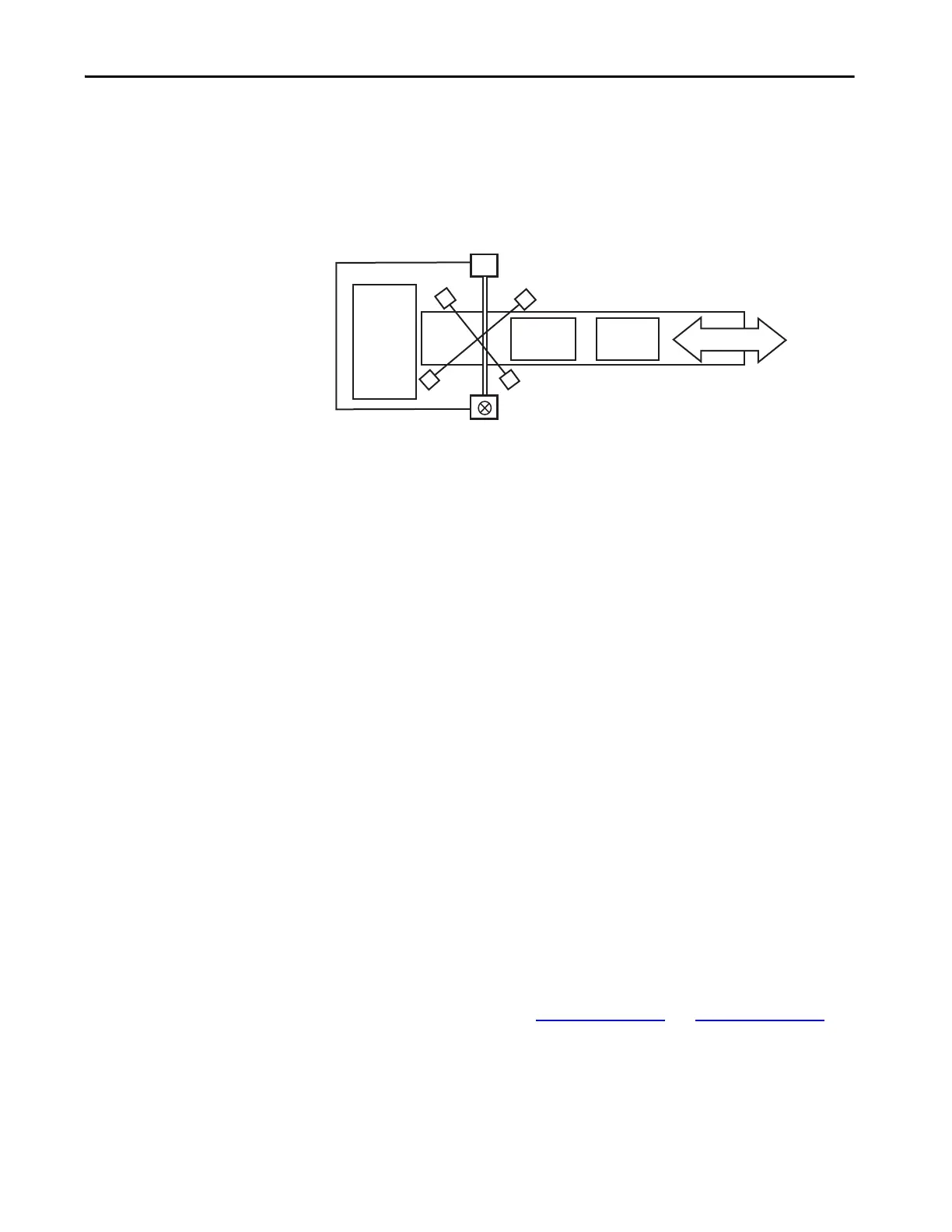Rockwell Automation Publication 450L-UM001D-EN-P - December 2019 41
Safety Function Chapter 4
Two-sensor T-type Muting
The sensors and light curtain form the shape of an upside down “T,” when viewed
from the side. The muting sensors (MS) are mounted to form an “X” sensing
pattern where the sensing beams cross near the center of the light curtain (LC).
Figure 14 - Two Sensor T-type Muting Arrangement
The muting sensors can be mounted symmetrically (equal distance from the light
curtain) or asymmetrically (unequal distance from the light curtain).
The material can break either MS1 first (or MS2 first), then the other sensor, and
then the light curtain. As the material clears the light curtain, it must then clear
MS2 (or MS1) first and then the other sensor. The muting lamp turns on shortly
after the second sensor is blocked, and the light curtain is muted.
Either of these two patterns is acceptable:
•MS1↑ MS2↓ LC↓ LC↑ MS2↑ MS1↑
•MS2↓ MS1↑ LC↓ LC↑ MS1↑ MS2↑
The crossing point of the two light beams is situated behind the sensing field of
the safety light curtain in the direction of the dangerous area.
The height of the crossing point of the two muting sensors is at the same level as
or higher than the lowest beam of the light curtain.
Be sure that the distance from the crossing point to the protective field of the
safety light curtain is as short as possible.
During the muting process, it is not possible for a person to enter the undetected
dangerous area to the left or right of the object.
With proper arrangement of the sensors, the conveyor can move in the forward
or reverse direction, while also maintaining safeguarding integrity.
For connecting the sensors, see Table 37 on page 92
and Table 41 on page 94 for
the cascading plug-in.
Machine
MS
MS
LC
Muting Lamp
Material
Conveyor
Material

